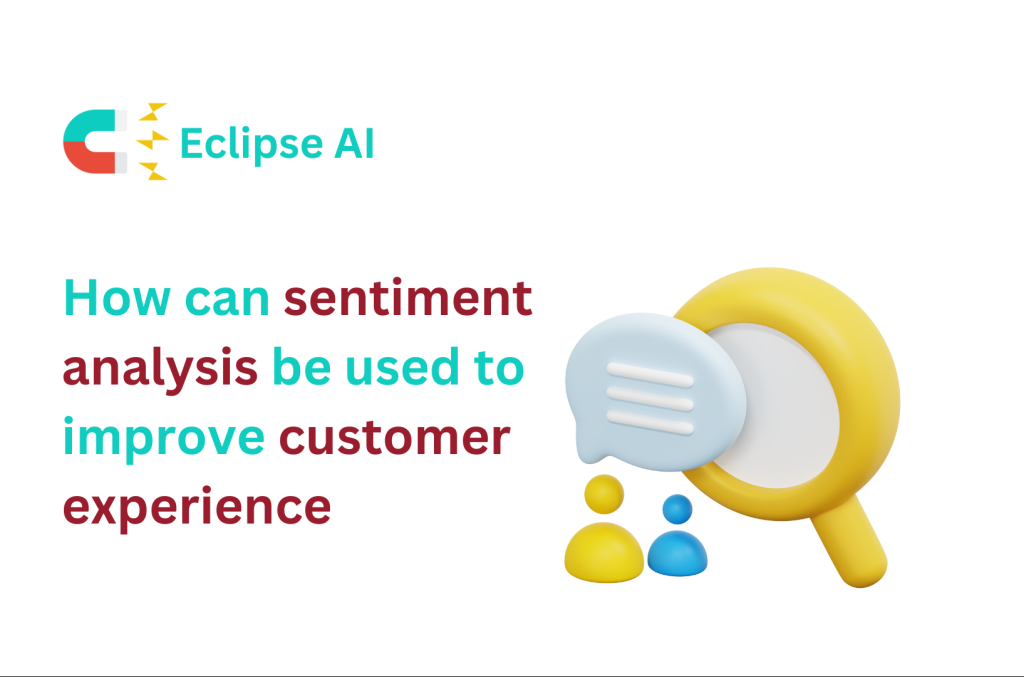

Customer Journey Map: Your Clear Guide to Customer Happiness
Understanding customer journey mapping from wide-eyed discovery to post-purchase bliss (or frustration), is the key to building stronger relationships and boosting your business.
Ever wondered what your customers are really feeling? Enter sentiment analysis, your new best friend for boosting customer experience. It’s like having a secret decoder ring that reveals whether your customers are happy, frustrated, or something in between. By understanding these emotions, you can make changes that really matter to your customers. Let’s explore how sentiment analysis can help you create an experience your customers will love, making it simpler than ever to keep them smiling.


Sentiment analysis is a technique used to detect and interpret emotions, opinions, and attitudes in written language. This method relies on algorithms and natural language processing (NLP) to sift through text — such as reviews, social media posts, or customer feedback — and classify it as positive, negative, or neutral. By analyzing these sentiments, businesses can gain insights into customer satisfaction, tailor their strategies, and improve overall customer experience. It’s a tool that turns the vast ocean of online text into meaningful, actionable information.
One of the most efficient and straightforward ways to conduct sentiment analysis is by using specialized software tools. These platforms use advanced algorithms and natural language processing (NLP) to quickly scan, interpret, and classify emotions in large volumes of text. Tools like Eclipse AI offer user-friendly interfaces and can integrate with social media, review sites, and customer feedback channels to provide real-time sentiment insights. They automate the process, making it accessible even to those without a background in data science, and allow businesses to track sentiment trends, monitor brand health, and respond proactively to customer feedback.


For those with the resources and technical expertise, building a custom sentiment analysis model using machine learning is another powerful option. This approach involves training a model on a labeled dataset where text samples are tagged with their corresponding sentiments. Tools and libraries like TensorFlow, PyTorch, or scikit-learn can be used for this purpose. This approach involves training a model on a labeled dataset where text samples are tagged with their corresponding sentiments. Tools and libraries like TensorFlow, PyTorch, or scikit-learn can be used for this purpose. While this method requires more investment in terms of time and expertise, it offers the advantage of being highly customizable to the specific nuances of your data or industry.
If you lack in-house development capabilities, consider partnering with a nearshore software development company. Utilizing their services can provide access to specialized skills and technologies, complementing your project’s needs effectively. This strategic collaboration can enable you to accelerate development timelines and achieve enhanced results without the overhead of expanding your internal team.
Although significantly more time-consuming and less scalable, manual sentiment analysis by human teams can be incredibly accurate, especially for nuanced or context-heavy text. This method involves individuals reading through feedback and categorizing it based on sentiment. It’s often used as a benchmark for training machine learning models or in conjunction with automated tools to ensure accuracy. Human analysis is particularly useful for understanding complex sentiments, sarcasm, or subtle expressions of emotion that automated tools might miss.
Each of these methods has its advantages and is suitable for different business needs and capacities. The key is finding the right balance between accuracy, scalability, and resource investment to harness the full power of sentiment analysis for enhancing customer experience.
Sentiment analysis helps in identifying individual customer preferences and emotions, allowing companies to tailor their interactions. By understanding the sentiment behind each customer interaction, businesses can personalize communications, offers, and services to meet specific needs and preferences, leading to enhanced customer satisfaction and loyalty.
Sentiment analysis provides direct feedback on what customers think and feel about your products or services. This feedback is invaluable for product development teams seeking to innovate or improve offerings. By analyzing customer sentiments, companies can pinpoint areas for improvement, identify features that customers love, and understand the factors driving customer satisfaction or dissatisfaction.
Customer support can make or break the customer experience. Sentiment analysis helps businesses understand the emotional context of customer inquiries and complaints, enabling support teams to prioritize responses based on urgency and sentiment. This not only improves response times but also ensures that customers with negative experiences are addressed promptly and efficiently, potentially turning a negative experience into a positive one.
Brand reputation is closely tied to customer experience. Sentiment analysis can scan social media, forums, and online reviews to gauge public sentiment towards your brand. By staying ahead of negative trends or feedback, businesses can address issues before they escalate, maintaining a positive brand image and ensuring consistent customer experience.
The insights gained from sentiment analysis can inform broader business strategies beyond customer experience. Understanding customer sentiment can influence marketing strategies, guide customer engagement initiatives, and shape overall business strategies. It provides a customer-centric lens through which every decision can be evaluated, ensuring that customer satisfaction is always at the forefront.
It enables businesses to automatically analyze customer feedback, reviews, and survey responses, helping them understand customer satisfaction levels, identify areas for improvement, and gauge responses to products or services.
By analyzing sentiments expressed in social media posts, forums, and online discussions, companies can gain insights into public opinion on brands, products, and services, assisting in market research and competitive analysis.
By automatically identifying negative sentiments in customer communications, businesses can prioritize and address these issues more efficiently, improving customer service and retention.
Beyond mere words, sentiment analysis can uncover the emotions and intentions behind text, offering deeper insights into consumer behavior and preferences.
So, here’s the scoop: sentiment analysis is like having a superpower for your business, allowing you to really listen to what your customers are saying—not just the words, but the feelings behind them. This isn’t just about fixing problems (though it’s great for that, too); it’s about celebrating the wins and making every customer feel heard and valued.
Imagine being able to tailor your customer experience so finely that each interaction feels like a warm, personalized handshake. That’s the magic sentiment analysis can bring to the table. It turns the ocean of customer feedback into a clear, sparkling pool of insights, making it easy to dive deep into what makes your customers tick.
By embracing this tool, businesses can not only respond to customer needs more swiftly but also anticipate them, creating a customer journey so smooth it feels like gliding. It’s about crafting those “Wow, they really get me!” moments that turn casual customers into loyal fans.


Understanding customer journey mapping from wide-eyed discovery to post-purchase bliss (or frustration), is the key to building stronger relationships and boosting your business.


Explore how Tesla’s unparalleled customer experience has skyrocketed brand loyalty, setting industry benchmarks and offering key insights for businesses aiming to enhance their customer loyalty strategies


Discover 7 easy ways to improve customer experience using customer journey maps. Streamline interactions, remove pain points, and build lasting loyalty with these practical tips
Don’t Let Your Competitors Understand Your Customers Better Than You
Don’t miss out. Try our 30-day Free Professional Trial.

